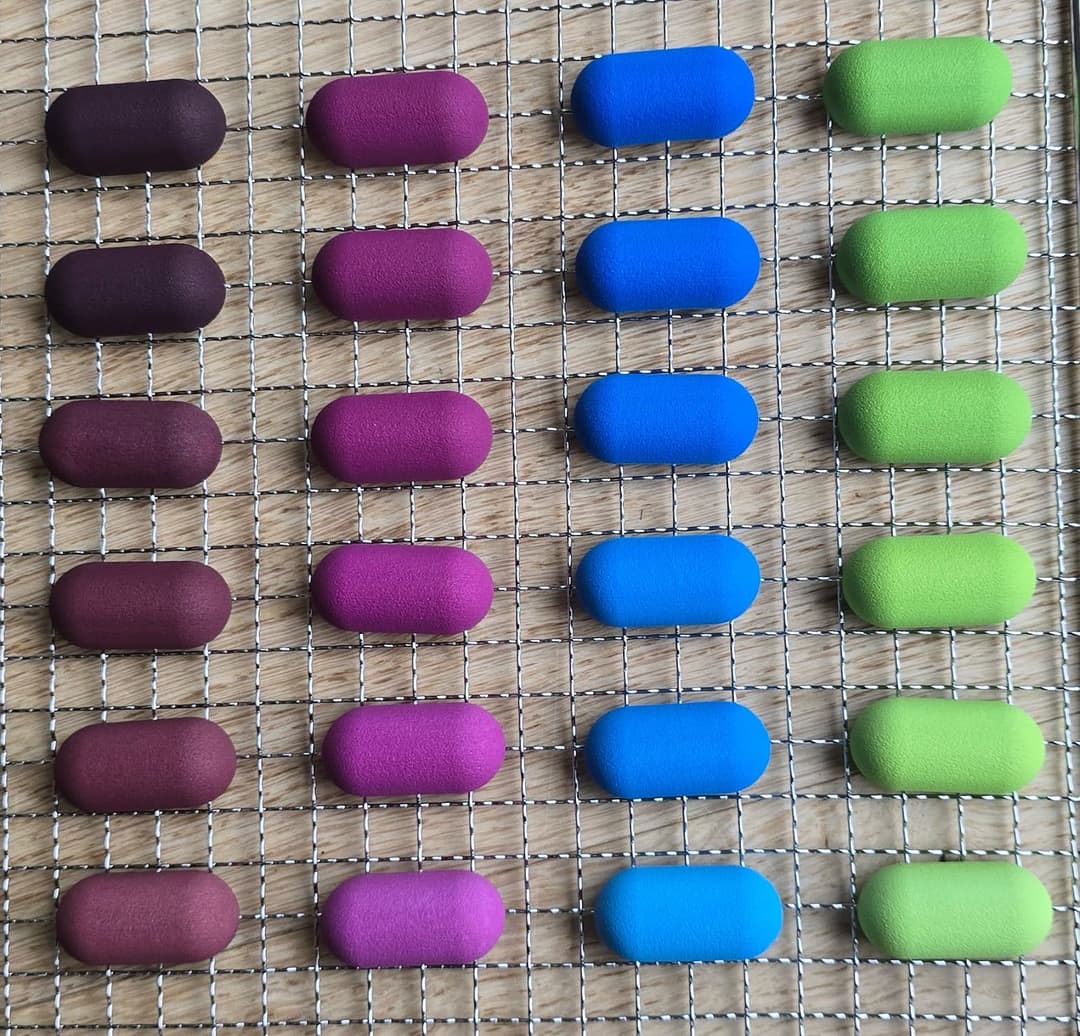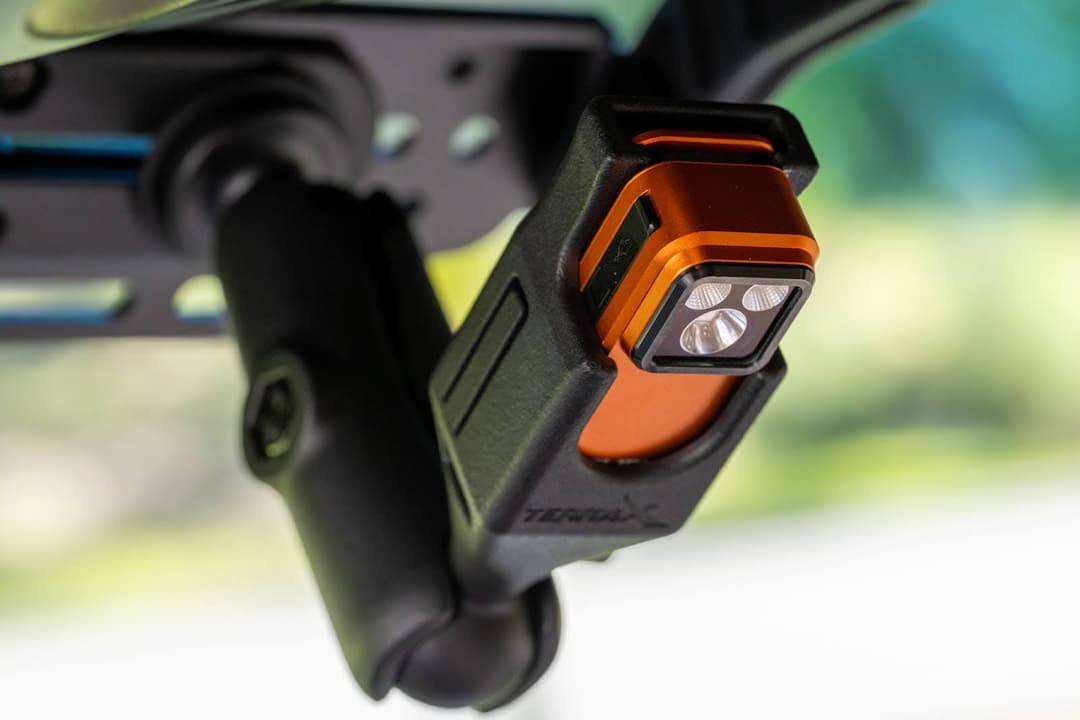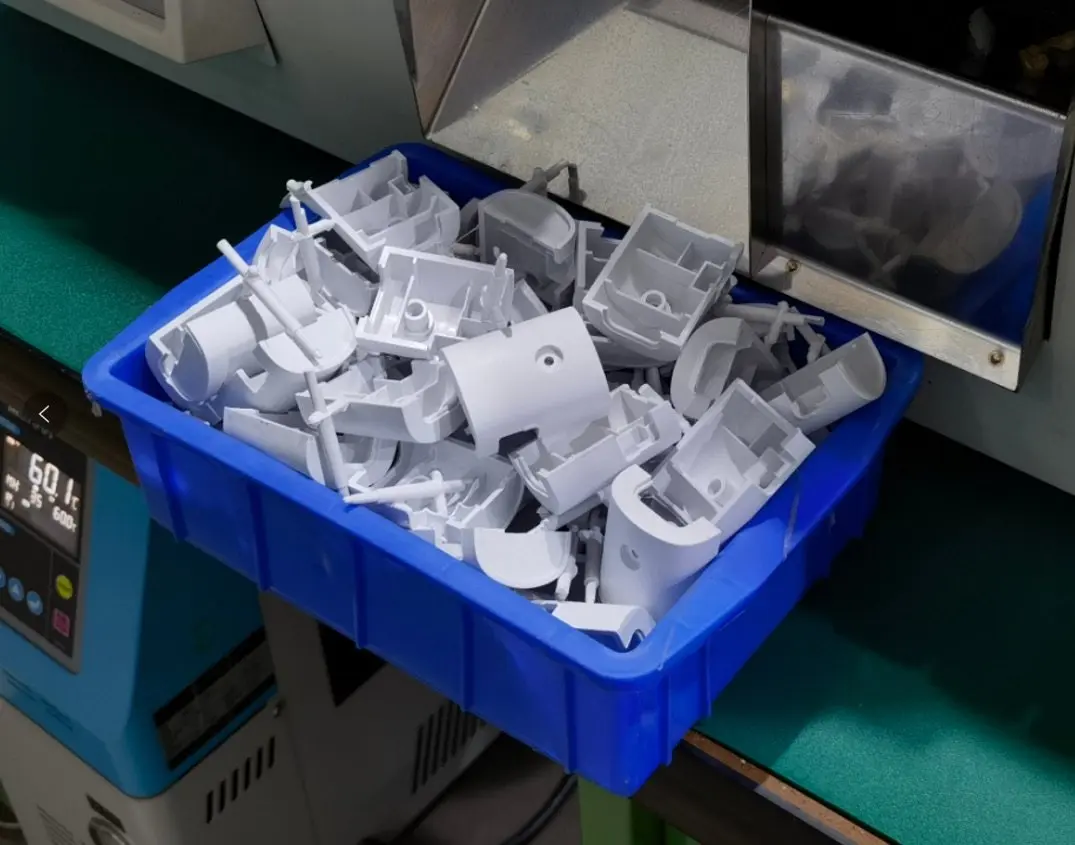
The short answer: plastic injection molds cost anywhere between $100 for a 3D printed low-volume injection mold to $100,000+ for a complex multi-cavity steel mold for high-volume production, which generally represents the most significant fixed start-up cost in injection molding. However, as these costs get distributed among hundreds or thousands of parts, injection molding is an ideal process to mass-produce plastic parts affordably.
In this guide, we provide an extensive breakdown of the different factors that make up the total injection molding cost.
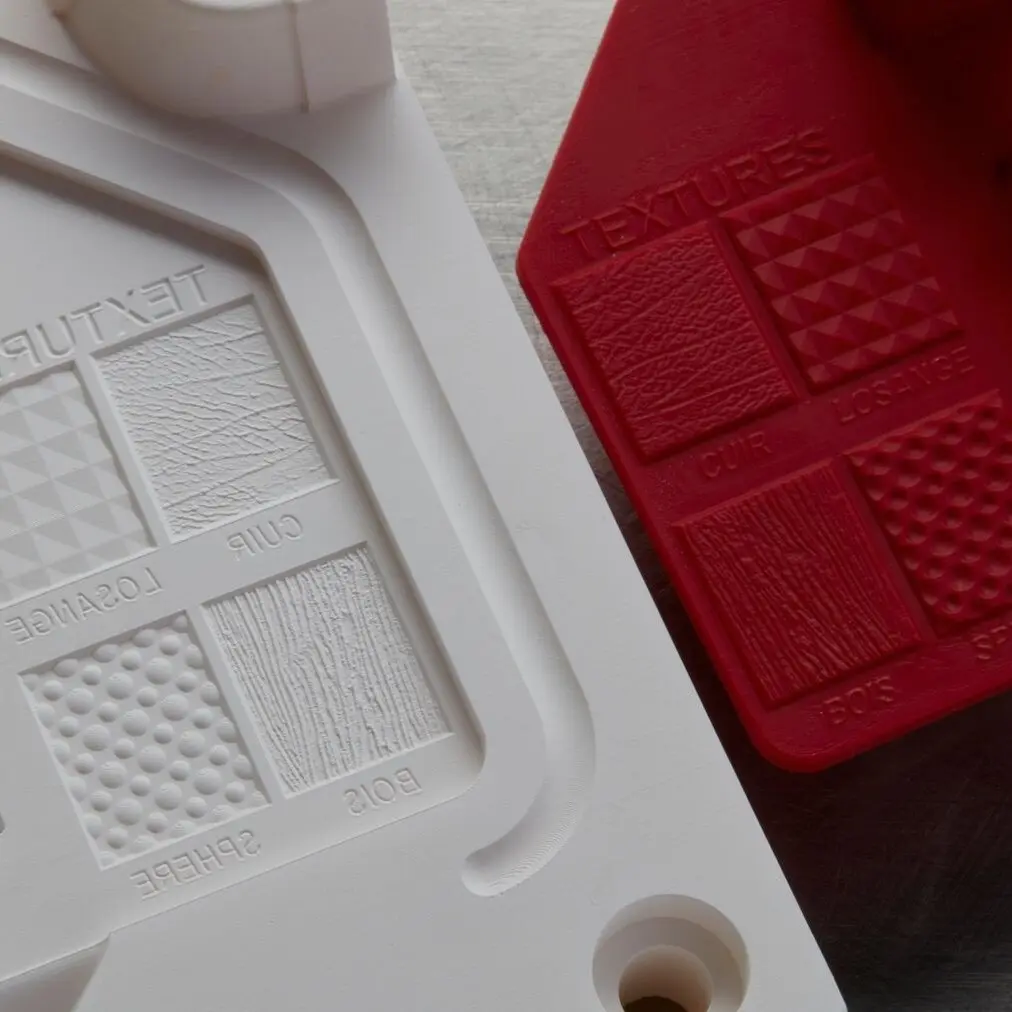
3D Printing for Injection Molding
Get in touch with our 3D printing experts for a 1:1 consultation to find the right solution for your business, receive ROI analyses, test prints, and more.
Introduction: How Much Does Injection Molding Cost?
Injection molding is one of the leading processes for manufacturing plastics. It is widely used for mass-producing identical parts with tight tolerances. It is a cost-effective and extremely repeatable technology that yields high-quality parts for large series production.
It is a fast, intensive process where high heat and pressure are involved to inject molten material inside a mold. The molten material depends on the scope of the manufacturing project. The most popular materials are various thermoplastics, such as ABS, PS, PE, PC, PP, or TPU, but metals and ceramics can be injection molded as well. The mold consists of a cavity that accommodates the injected molten material and is designed to closely mirror the final features of a part.
Normally, the main cost driver in injection molding is the cost of the mold, also known as the tooling cost. The cost of designing and building a mold depends on the required production volume, the complexity of the part design, mold material, and the process used to create the mold.
Simple low-volume 3D printed molds can cost as little as $100, while the cost of designing and manufacturing complex molds for high-volume production may hit the $100,000 mark. Despite the considerable fixed start-up costs, the injection molding process has low variable costs due to the inexpensive thermoplastics materials, short cycle times, and the labor needs decrease progressively due to automation and economies of scale. This means that the variable costs of production are low and the process becomes more efficient and the cost per part decreases at higher volumes as the costs get distributed among hundreds or thousands of parts.
In this video, we've partnered with injection molding service provider Multiplus to walk you through the steps of the injection molding process using 3D printed molds.
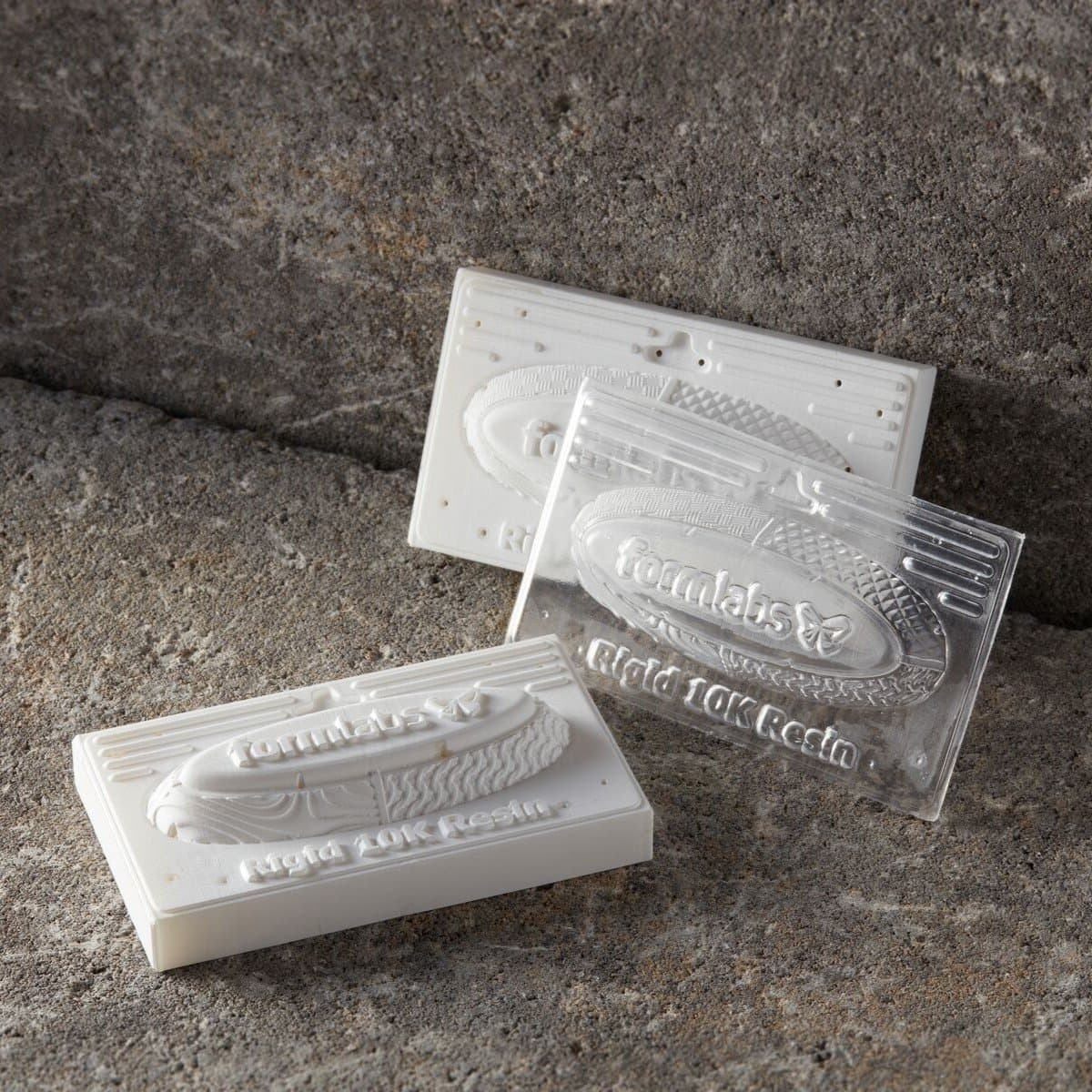
Request a Free Sample Part
See and feel Formlabs quality firsthand. We’ll ship a free 3D printed sample part to your office.
Types of Costs in Injection Molding
Understanding the different types of costs associated with injection molding requires an in-depth analysis of the process.
Equipment Costs
Special-purpose machines are used for injection molding that can range from smaller desktop injection molding machines that businesses can use in-house to large industrial injection molding machines that are mostly operated by service providers, contract manufacturers, and large manufacturers.
Producing low volumes of parts with injection molding is the most cost-effective with smaller desktop injection molding machines and 3D printed molds. If you are new to injection molding and are looking into testing it with limited investment, using a benchtop manual injection molding machine such as the Holipress or the Galomb Model-B100 could be a good option. Automated small-scale injection molding equipment such as the desktop machine Micromolder or the hydraulic machine Babyplast 10/12 are good alternatives for medium-series production of small parts.
Large industrial injection molding machines can cost anywhere from $50,000 to $200,000+. These machines also come with more stringent facility requirements and require skilled labor for operation, maintenance, and monitoring. As a result, unless injection molding is a core competence, most enterprises outsource mass production to service providers and contract manufacturers, in which case the equipment costs are included in the service costs.
Mold Costs (Tooling Costs)
As we mentioned in the introduction, mold costs or tooling costs are usually the main cost driver in injection molding.
Molds for injection molding are generally made using three methods:
-
CNC machining: CNC machines are the most commonly used tools for manufacturing aluminum and stainless steel molds with high precision levels. CNC machining removes material by a spinning tool and fixed part. Machining can produce molds where the cavity design is highly complex, but they might require multiple tool changes that can slow down the process, which means that costs increase in line with complexity. CNC machines are industrial tools that require a skilled workforce and a dedicated space, which means that many companies outsource mold production to service providers.
-
Electrical discharge machining (EDM): The EDM method is generally used to create highly complex mold designs that cannot be easily reproduced using standard machining methods. EDM involves the use of a workpiece and a tool electrode to create the desired mold shape. The tool electrode and workpiece electrode are separated by a dielectric fluid and subjected to voltages that cause recurring current discharges. The discharges are responsible for shaping the workpiece electrode into the final mold. EDM is highly accurate and does not generally require any additional post-processing. Similar to CNC machining, EDM is also an industrial process that many companies outsource to machine shops.
-
3D printing: 3D printing is a powerful solution to fabricate injection molds rapidly and at a low cost. It requires very limited equipment, saving CNC time and skilled operators for other high-value tasks in the meantime. Manufacturers can benefit from the speed and flexibility of in-house 3D printing to create molds that can be used on both desktop and industrial molding machines. Furthermore, product development benefits from the ability to iterate on the design and test the end-use material before investing in hard tooling for mass production. Stereolithography (SLA) 3D printing technology is a great choice for injection molding. It is characterized by a smooth surface finish and high precision that the mold will transfer to the final part and that also facilitates demolding. 3D prints produced by stereolithography are chemically bonded such that they are fully dense and isotropic. Desktop SLA printers, like those offered by Formlabs, start below $5,000 and can seamlessly be integrated into any injection molding workflow as they are easy to implement, operate, and maintain.

3D printed molds can produce 100+ parts affordably and within a few days.
Developing more complex molds requires technical expertise. As a result, enterprises often outsource specific aspects of the injection molding process such as the design and fabrication of the mold.
For enterprises with the equipment and tools for injection molding, choosing to create molds in-house could be the least expensive option if the technical know-how is also available. If the tools needed for injection molding are not readily available, then outsourcing reduces the cost associated with developing a mold.
Simple low-volume 3D printed molds can be produced on an (SLA) resin 3D printer for as little as $100. An aluminum mold for a mid-volume production run of approximately 1,000-5,000 units falls within the range of $2,000 to $5,000. For molds with more complex geometries and primed for larger production runs of approximately 10,000+ units, the cost of mold can range from $5,000 to $100,000.
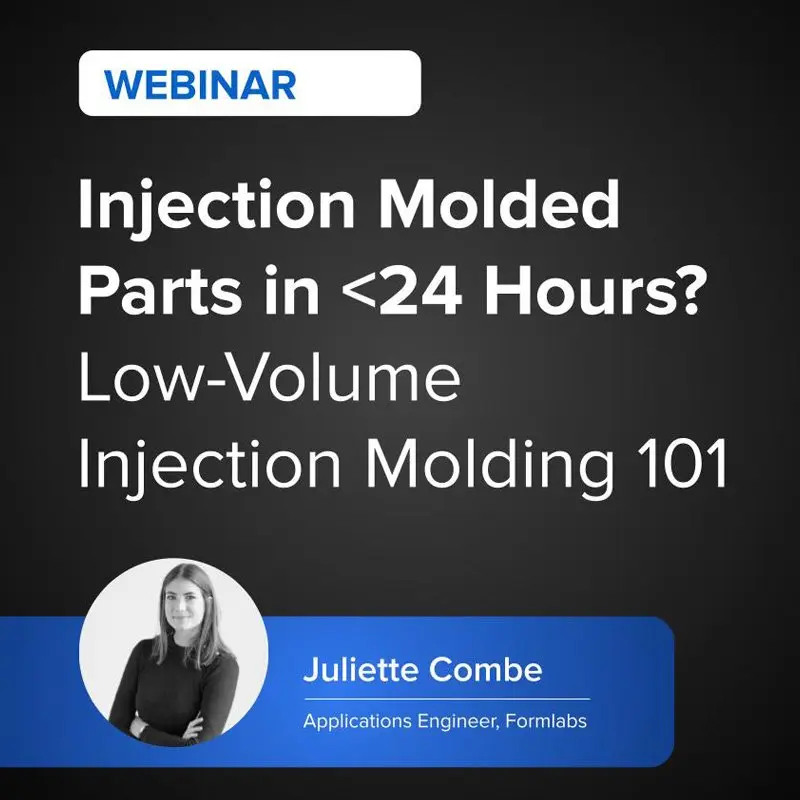
Injection Molded Parts in <24 Hours? Low-Volume Injection Molding 101
In this webinar, we'll show you how to use stereolithography (SLA) 3D printed molds in the injection molding process to lower costs, reduce lead times, and bring better products to market.
Injected Material Cost
A wide variety of plastics can be used for injection molding depending on the requirements of the final parts, including ABS, PS, PE, PC, PP, or TPU.
The cost of purchasing materials for molds differs according to the material chosen. Thermoplastic pellets cost approximately $1 to $5 per kg.
Material cost is defined by a model’s design, the material chosen, and the amount of material used to execute the injection molding process.
Labor or Service Costs
The equipment associated with injection molding is generally self-regulating and relies on automation to get the job done. CNC machines, EDM machines, and industrial 3D printers rely on the specifications of the CAD design to produce a mold. The injection molding machine also relies on automation to inject materials into the mold, and industrial IM machines often cool and eject the finished item autonomously.
Labor costs include:
-
Setup/configuration cost: The setup labor focuses on the time taken to configure the utilized equipment to produce the mold and the finished product.
-
Repair cost: Repair and maintenance tasks involve the replacement of defective parts and the use of tools to execute the maintenance process.
-
Monitoring costs: Despite the reliance on automation, equipment operators are expected to monitor the progress of the injection molding process. Operator wages accrued during the process are added to the total cost of injection molding.
When producing in-house, these costs are calculated into the labor costs. When a business outsources injection molding, the labor and the markup of the service provider are added to the service cost.
Injection Molding Cost Overview
The table below highlights the cost associated with injection molding a hypothetical plastic item, such as a small enclosure of an electronic device, which makes the cost dynamics of injection molding easier to understand:
| Low-Volume Production | Mid-Volume Production | High-Volume Production | |
|---|---|---|---|
| Production volume | 100 | 5,000 | 100,000 |
| Method | In house mold production and in house molding | Outsourced mold production and molding | Outsourced mold production and molding |
| Mold | 3D printed polymer | Machined aluminum | Machined steel |
| Lead time to final parts | 1-3 days | 3-4 weeks | 4-8 weeks |
| Equipment required | 3D printer, desktop injection molding machine* | - | - |
| Mold cost | $100 | $3,000 | $20,000 |
| Material cost | $0.5 / part | $0.5 / part | $0.5 / part |
| Labor costs or outsourcing cost | $2.5 / part | $1.5 / part | $1 / part |
| Total production cost | $400 | $13,000 | $170,000 |
| Cost per part | $4 | $2.6 | $1.7 |
* Equipment costs are not calculated into the production costs in this example as the cost of these tools can be distributed among multiple projects. Purchasing a desktop injection molding machine and an SLA 3D printer allows businesses to get started with injection molding for less than $10,000.
The three scenarios in the table show the methods and the mold types that result in the lowest cost per part depending on the production volume.
In general, injection molding is the most efficient at higher volumes, as the costs then get distributed among thousands of parts. But even though the cost per part for low-volume injection molding is slightly higher, it is still substantially more affordable for low-volume production than other manufacturing methods.
Mid-volume production is the most efficient with machined aluminum molds that have a lower cost than traditional steel mold, but are durable enough to last a few thousand shots, depending on factors like the material and the design. In most cases, low-volume injection molding is only reasonable with 3D printed molds—in our example, if we were to use an aluminum mold to produce 100 parts, its cost would account for $30 for each part, while a traditional steel mold would mean $200 for each part.
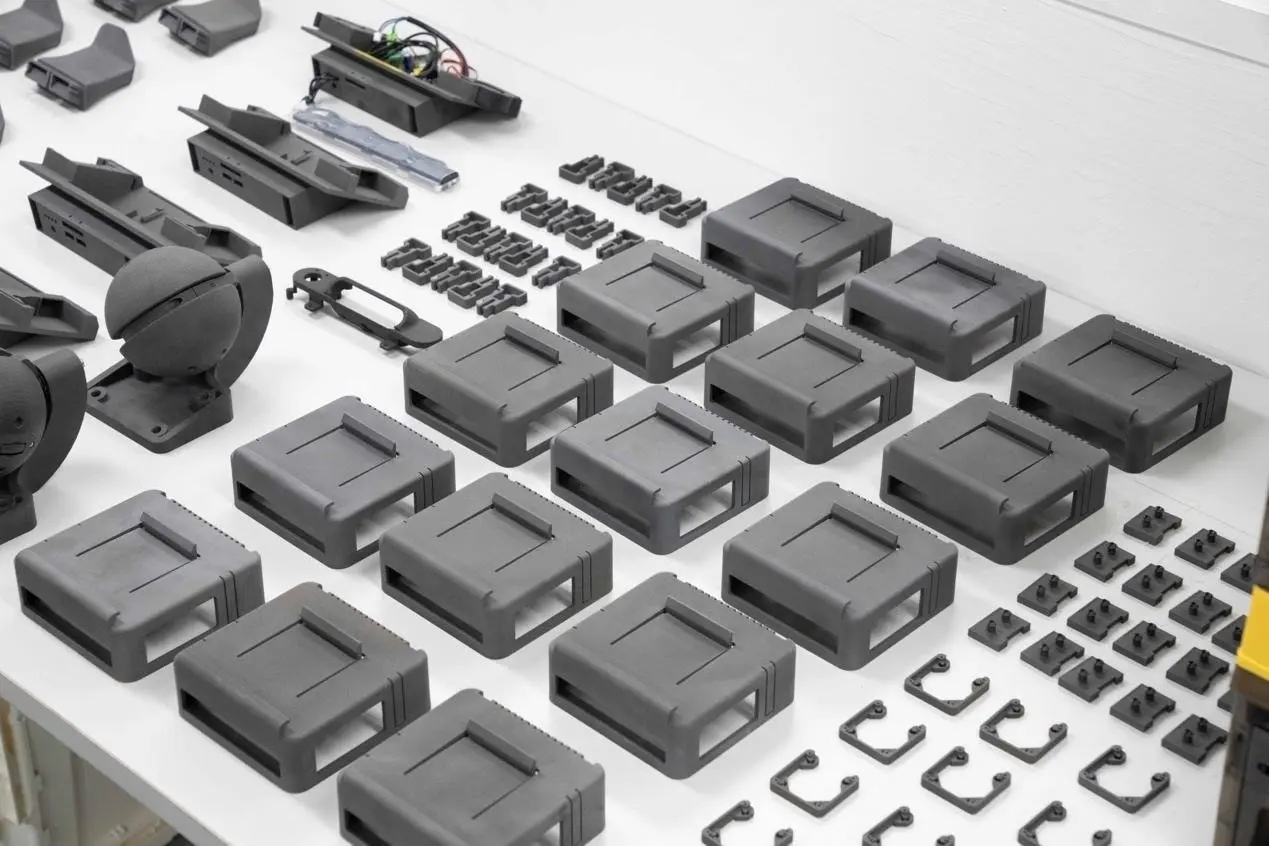
SLS 3D Printing for Production
Bring production in-house and reduce cost per part with a proven, scalable, and accessible SLS ecosystem. Formlabs’ Fuse Series is the #1 SLS 3D printing platform that has helped thousands of customers bring new products to the market and achieve their lowest cost per part, ever.
Variables that Impact the Injection Mold Cost
Tooling costs for injection molding are very high and depend on a number of parameters and design complexity. Molds for injection molding are normally CNC machined out of aluminum or tool steel, EDM machined to shape a workpiece, or 3D printed. The machined or printed part is then finished to achieve the desired standard. The finished mold consists of features such as the surface geometries needed for a part, a runner system to guide the flow of injected materials, and cooling channels to ensure the mold cools down quickly.
It is important to note that a majority of the injection molding process is dedicated to cooling. The quicker a mold cools down the faster the injected material solidifies and the faster the production cycle can be repeated. Thus, cooling channels play an important role, especially for high-volume production, and should be included in the design of the mold. For low-volume production with 3D printed molds, manual cooling using compressed air is an option.
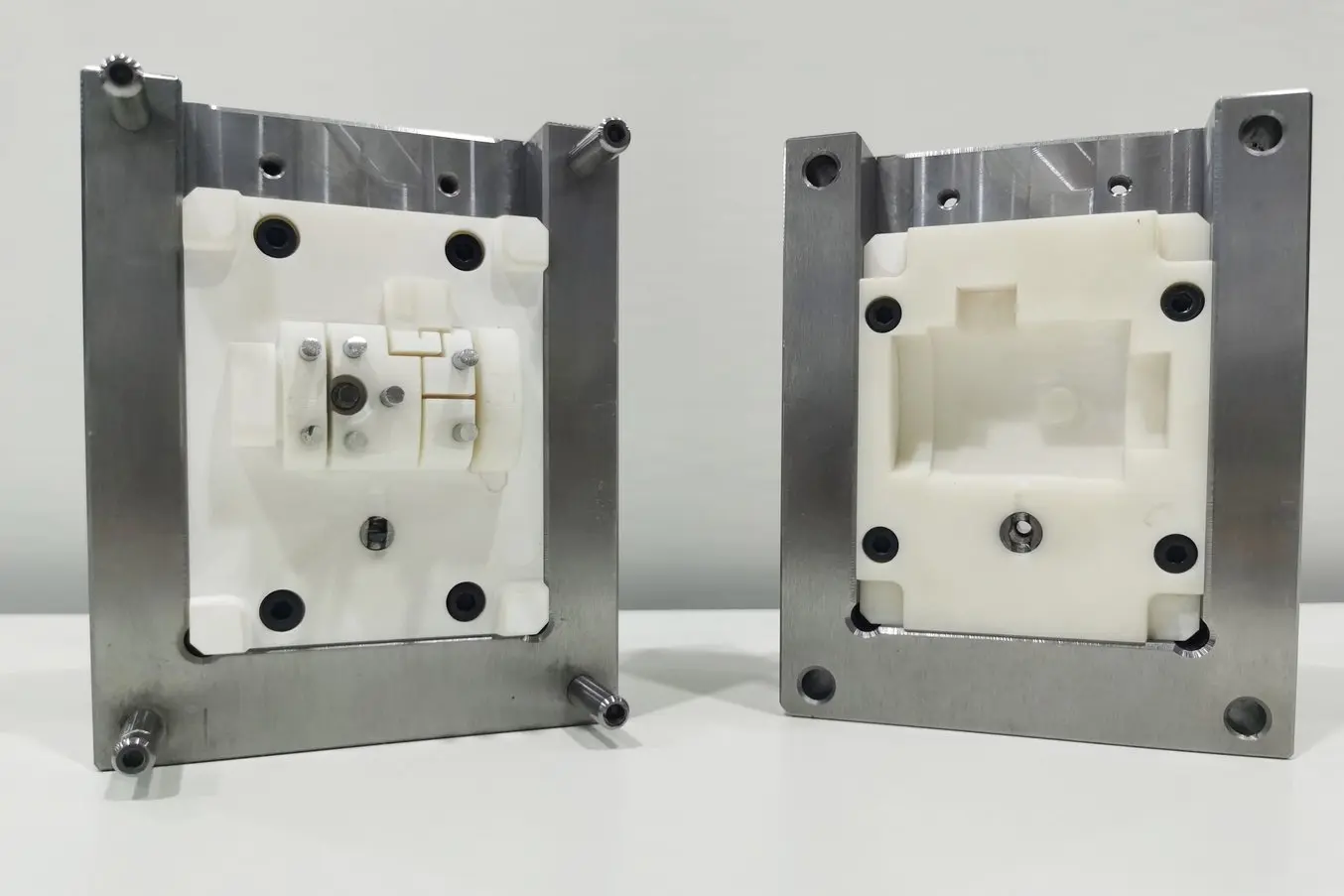
A 3D printed injection mold core assembled with a metal mold shell.
Other variables that impact the injection molding process and directly relate to the injection mold costs include:
-
Part size: The larger the item or part to be molded, the larger its mold will be to accommodate the part. Larger parts tend to require more injected materials to complete production cycles. Larger mold designs usually come at an increased cost compared to fabricating the same design but with smaller dimensions.
-
Part design: Complex part designs with intricate geometries require complex molds to execute the project. Mold designs usually have 2 sides: sides A and B. Side A, also known as the cosmetic side, is usually the side seen by the user. Side A is expected to be smooth and aesthetically pleasing. Side B contains the hidden structures that support the usage of the part. Side B structure may include ribs, bosses, etc., and its finish is usually much rougher than that of Side A. Molds with complex Side A and Side B designs are generally more expensive to fabricate compared to simpler molds. Complex designs that feature undercuts might also require sliding side-actions and cores, increasing the cost of the mold.
-
Production volume: The number of items to be produced using injection molding determines the production technology and the quality of material to use when creating the mold. Low volume projects might require 3D printed or lower-grade machined aluminum molds, while large production volumes will require high-grade steel molds or even multiple molds to manage the process without wear and tear affecting the quality of produced items. This affects the cost of the mold, but of course, the increased cost of high volume molds is distributed among more parts, which normally leads to a lower per part cost.
-
Part volume and cavities: Part volume refers to the cavity size of a mold. The more cavities or cavity volume a mold requires the longer the press time. Increased press time slows down the production process which leads to increased cost.
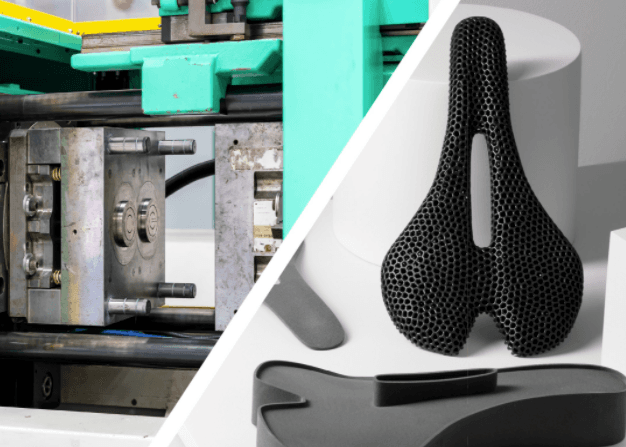
SLS 3D Printing vs. Injection Molding: When to Replace Molded Parts With 3D Printing?
This white paper showcases the cost-dynamics for real-life use cases, and presents guidelines for using SLS 3D printing, injection molding, or both.
Injection Molding Cost Calculators
Online injection molding cost estimators or quotes from injection molding service providers can provide benchmarks and help you estimate the cost of injection molding specific parts.
Injection molding cost estimator options to aid the calculation process include:
A molding cost comparison table also serves a similar purpose. Injection molding service providers use cost comparison tables to provide prospective customers with a rough estimate of the process.
Reducing Injection Molding Costs
The cost of the mold is largely defined by the complexity and the amount of time it takes to produce it. We advise adhering to design for manufacturing principles to drive down part costs with injection molding.
The cost of producing the mold can be reduced by applying the following design guidelines:
-
Evaluate the CAD model to determine its feasibility before undertaking an injection molding project. Eliminate potential bottlenecks such as steep angles, undercuts, and other complex geometries.
-
Evaluate the model’s design to eliminate unnecessary features. This reduces the mold’s size and the material used to develop the model.
-
Apply a core cavity approach that simplifies the design of Side B of a mold. The core cavity approach involves sinking the wall cavities into the mold base, thereby reducing the need to mold steep draft angles while improving surface finish.
-
Embrace the use of self-mating parts to reduce the need to create multiple molds when one universal mold can be used to achieve similar results.

Low-Volume Rapid Injection Molding With 3D Printed Molds
Download our white paper for guidelines for using 3D printed molds in the injection molding process to lower costs and lead time and see real-life case studies with Braskem, Holimaker, and Novus Applications.
Get Started With Rapid Injection Molding
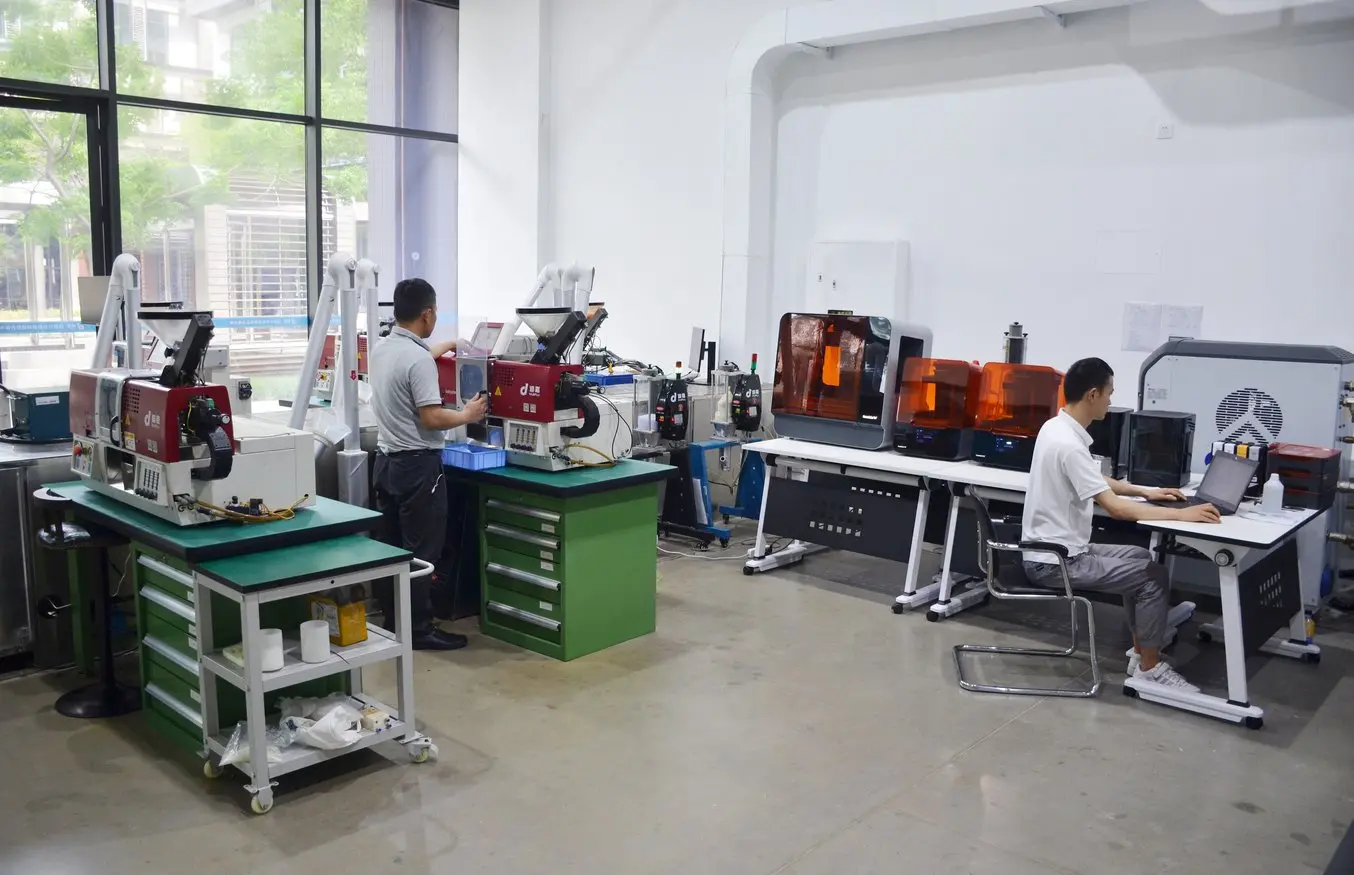
While injection molding is traditionally considered a manufacturing process only for mass production due to its high tooling costs, leveraging 3D printing to fabricate injection molds empower you to use this process to produce high-quality and repeatable parts for prototyping and low-volume production.
Use 3D printed injection molds with both benchtop and industrial machines to efficiently and affordably produce hundreds to thousands of functional prototypes, parts to accelerate product development, reduce costs and lead times, and bring better products to market.

